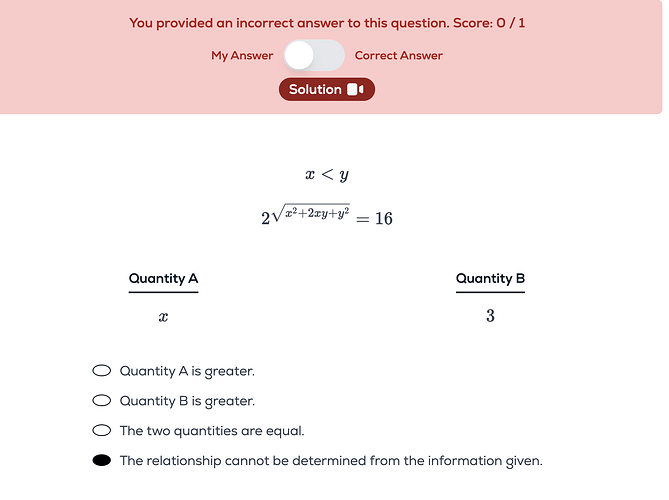I believe the answer to this question should be D. While I reviewed Greg’s solution, I think we should also consider negative values for 𝑥 and 𝑦. This is because under the radical, the expression involves (𝑥 + 𝑦)^2, which is always non-negative regardless of whether 𝑥 or 𝑦 are negative. If we account for the possibility of negative values, there are multiple ways to achieve a sum of 4 other than 𝑥 = 3 and 𝑦 = 1. For example, 𝑥 = 5 and 𝑦 = − 1 also work. I tested these values in the radical and confirmed they do not result in a negative value. Additionally, what about the case 𝑥 = 4 and 𝑦 = 0 (Question doesn’t mention it can’t be 0) ? If we include this possibility as well, then the answer becomes D.
I’d appreciate your insights on why these cases are not being considered in the solution provided.
Thank you!
